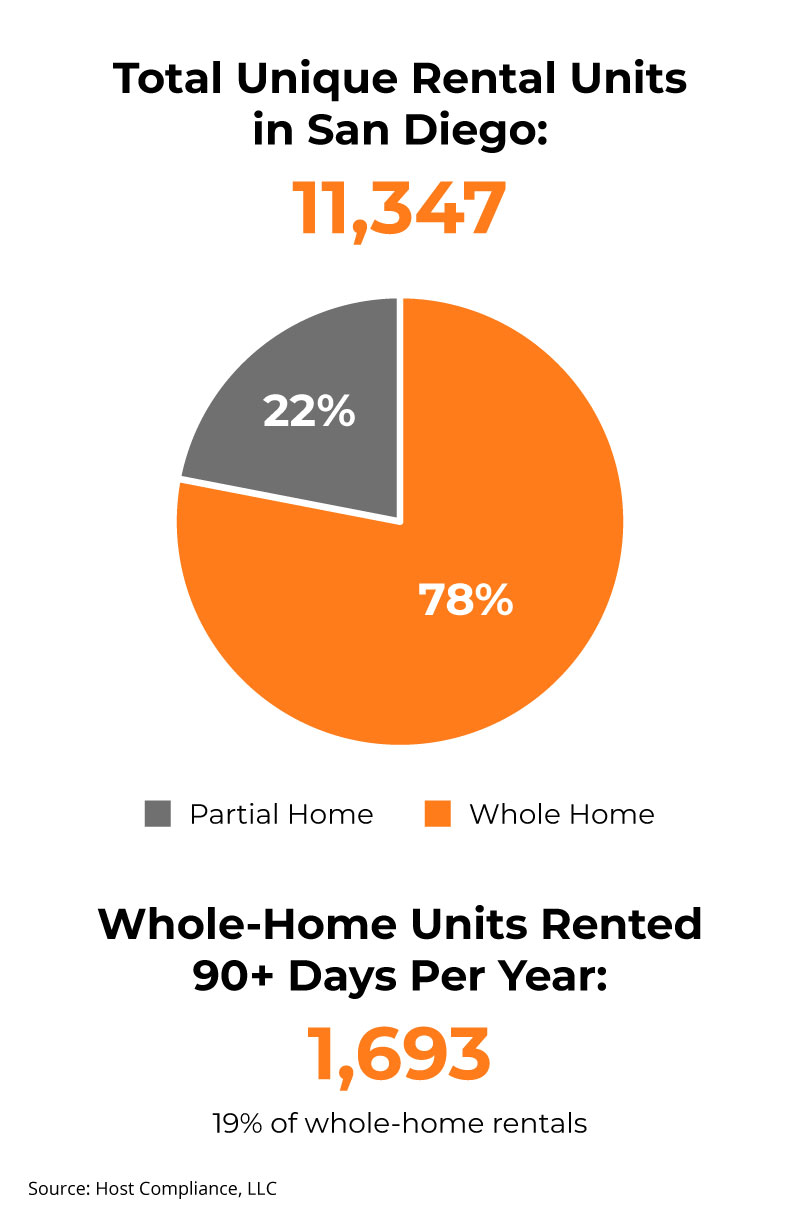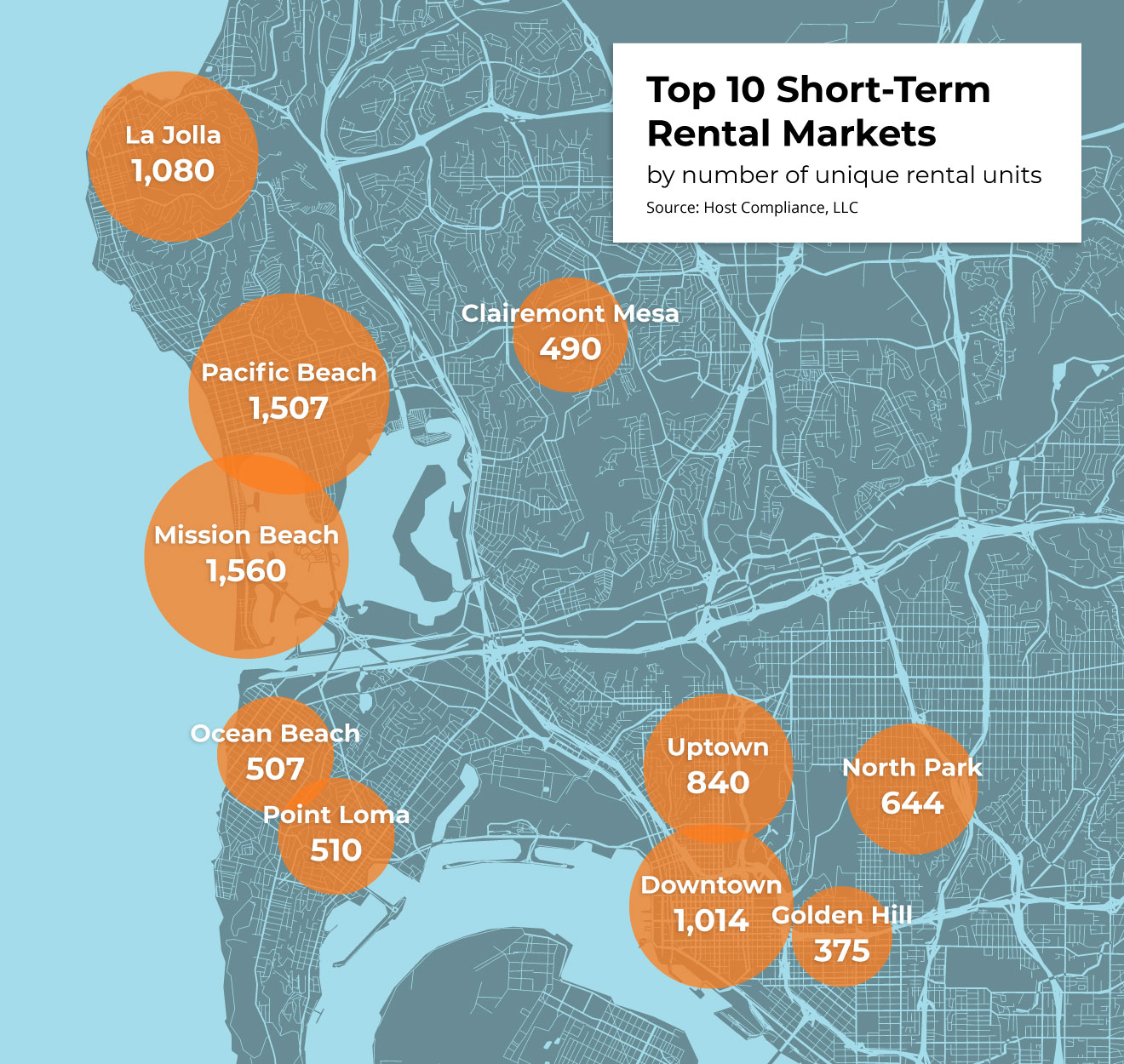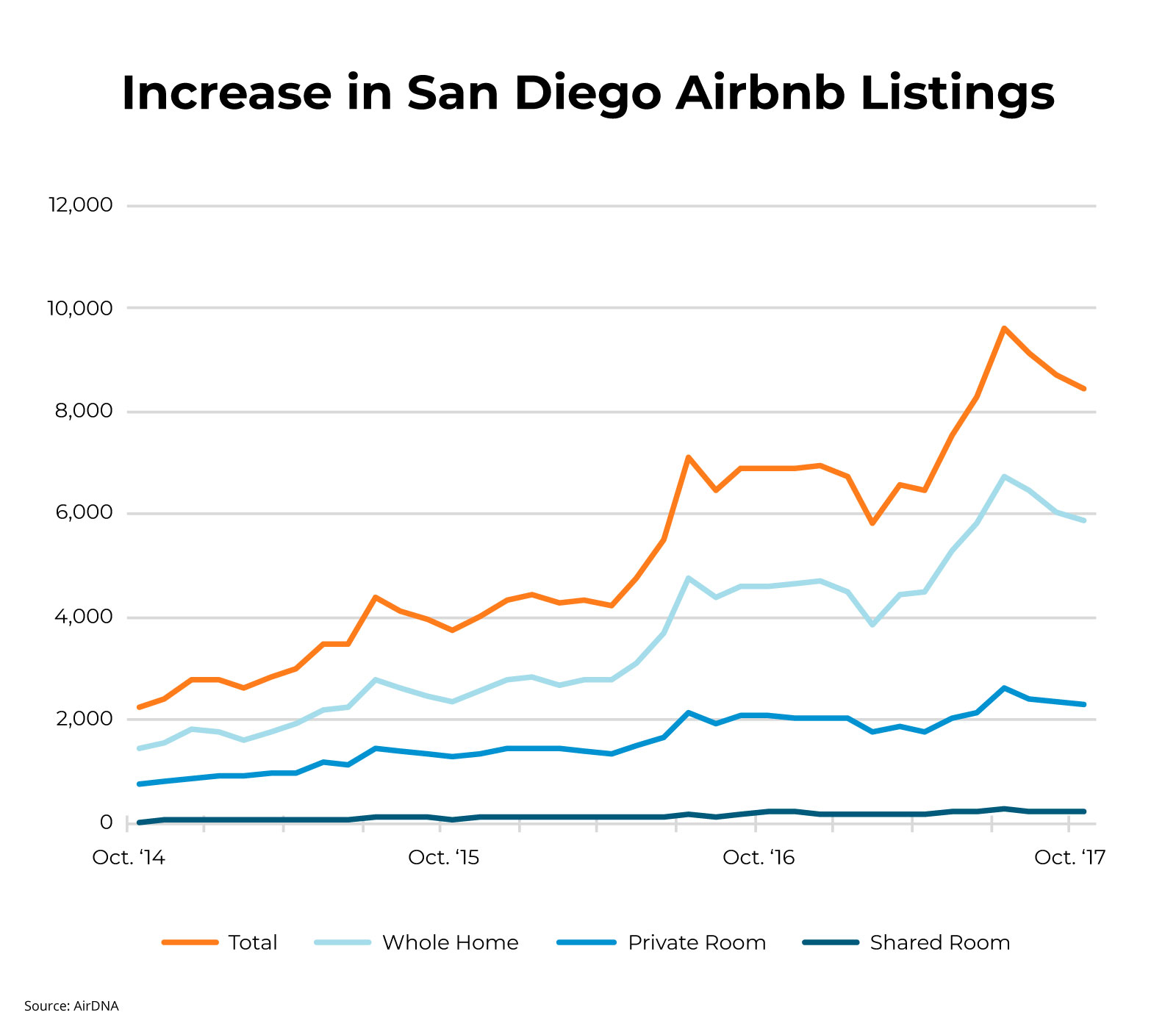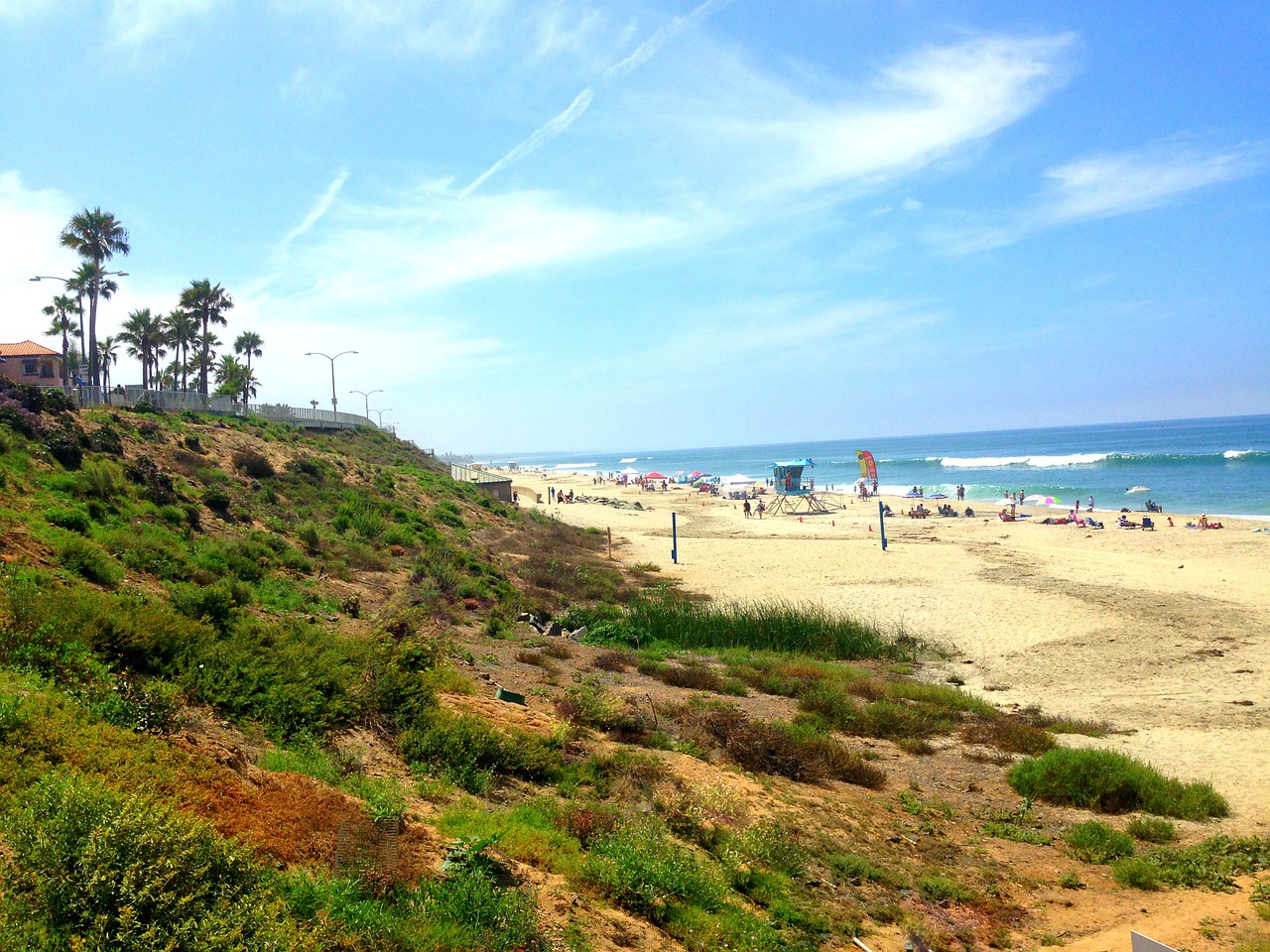New data on San Diego’s short-term rental market shows most whole-home rentals are being offered up less than a quarter of the year.
Owners of nearly 9,000 homes in the city of San Diego are renting them out to visitors, according to new data.
But a new analysis by Host Compliance, a San Francisco-based company that’s provided rental data to dozens of other cities, also shows just 19 percent of the homes being rented to visitors are being rented more than 90 days of the year. The numbers pertain to whole-home rentals, in which the owner is not on site and renters have run of the property, as opposed to home-sharing, in which an owner stays on site and makes a room or other space available within the home.
Host Compliance scraped data from two dozen rental sites after a request from Voice of San Diego.
(Update: After this post published, Host Compliance CEO Ulrik Binzer contacted Voice of San Diego to report he had discovered his analysis failed to fully capture stays booked on Expedia sites, which comprise an estimated 24 percent of San Diego’s short-term rental market. This may affect the percentage of homes rented out to visitors more than 90 days a year in total. Host Compliance is now analyzing occupancy data again. VOSD will update the story as soon as it receives the update.)
The City Council is set to vote Tuesday on how to regulate the short-term vacation rental industry.
But the most important fact of the very contentious debate has been elusive: How many homes are people renting out to visitors, and how much has that gone up in recent years? Airbnb policy chief Chris Lehane said there has not been a major increase in short-term rentals in San Diego. Jonah Mechanic, whose company manages vacation rentals and advocates for regulations that allow for responsible renting , says that is not accurate but that many homes being rented out would not return to the housing market if vacation rentals were shut down – they’d just stay vacant except for the few times per year their owners use them.
Advocates of outright bans or very strict rental restrictions have floated many different numbers.
We may now have some clarity.
Host Compliance researchers filtered out multiple listings to find just the unique properties being rented out.
They estimated there were 11,347 short-term vacation rental units in the city. Of those, 8,855 are the whole-home rentals that have caused the most frustration in neighborhoods.

The nearly 9,000 whole-home rentals make up the equivalent of less than 2 percent of the city’s housing inventory, per the U.S. Census Bureau’s latest five-year housing estimates.
(Update: Host Compliance has notified VOSD that the numbers in this graphic do not fully capture stays booked on Expedia sites, which comprise an estimated 24 percent of San Diego’s short-term rental market and thus should be viewed with caution. VOSD will update this post as soon as it receives updated data from Host Compliance.)
Host Compliance found that 10 San Diego neighborhoods make up three-quarters of San Diego’s vacation rental market. Here’s a breakdown of the city’s vacation rental hot spots and the number of units each has. This data includes both partial and whole-home rentals.

The data also shows that 19 percent of whole-home vacation rentals in the city host different short-term visitors more than a total of 90 days a year, and that 61 percent of whole-home properties are rented out for fewer than 31 days a year.
The 90-day timeframe is particularly significant in the regulatory debate that will play out next week.
City Councilwoman Barbara Bry has pushed a plan that would allow homeowners to rent out their places to visitors up to 90 days a year. A group of four City Council members is advocating another plan that would allow rentals all year long with a minimum three-night stay in coastal zones.
Now, how much has it gone up?
It’s not clear.
The data we have shows Airbnb, which has been in the San Diego market since about 2011, saw a massive uptick in listings on its platform the past few years.
What’s missing are numbers that shed light on the number of vacation rentals in San Diego before Airbnb and other rental sites came onto the scene.
Airbnb pointed me to annual Census survey estimates on vacant seasonal and recreational housing, which can be used to track vacation rentals. But the margin of error tied to them rendered them useless for tracking these trends.
The data actually seemed to show the number of rentals has actually fallen from nearly 13,000 in 2014 to about 10,280 – though that differential is altogether eliminated when you factor in the margin of error.
Mechanic helps lead Share San Diego and is most explicitly opposed to Bry’s ordinance. He said it was not a good idea to try to argue that vacation rentals have not expanded.
“I think it’s very clear to everyone that more and more residents in San Diego are participating in the sharing economy, which is something that is available to them now, which is more commonplace today than it ever was,” Mechanic said.
AirDNA, a company that closely tracks Airbnb listings, provided data showing the number of properties posted on Airbnb more than tripled between October 2014 and October 2017.
Despite constant disagreement over vacation rentals, two groups on opposite sides of the debate – Save San Diego Neighborhoods and Share San Diego – have largely relied on AirDNA data in their most recent studies.
Airbnb is one of many rental sites but it’s the most popular. Host Compliance estimates about two-thirds of San Diego rental listings are posted on Airbnb.
AirDNA documented just 2,257 Airbnb rental properties in the city in October 2014. This October, it counted 8,446 of them. And the number of whole-home rentals alone has spiked more than four-fold.
Here’s how that growth has played out.

But data from Host Compliance, which conducted the broader review of the rental market over the last year, underlines constant shifts in the market that aren’t captured by the previous data set.
Over the last year, 7,462 listings were pulled off vacation rental sites including Airbnb while more than 9,400 were added or reactivated, according to the Host Compliance analysis.
That means 60 percent of listings that were active on vacation rental sites just a year ago are no longer online, and that 65 percent of the city’s listings have been posted in the last year.
[divider] [/divider]





